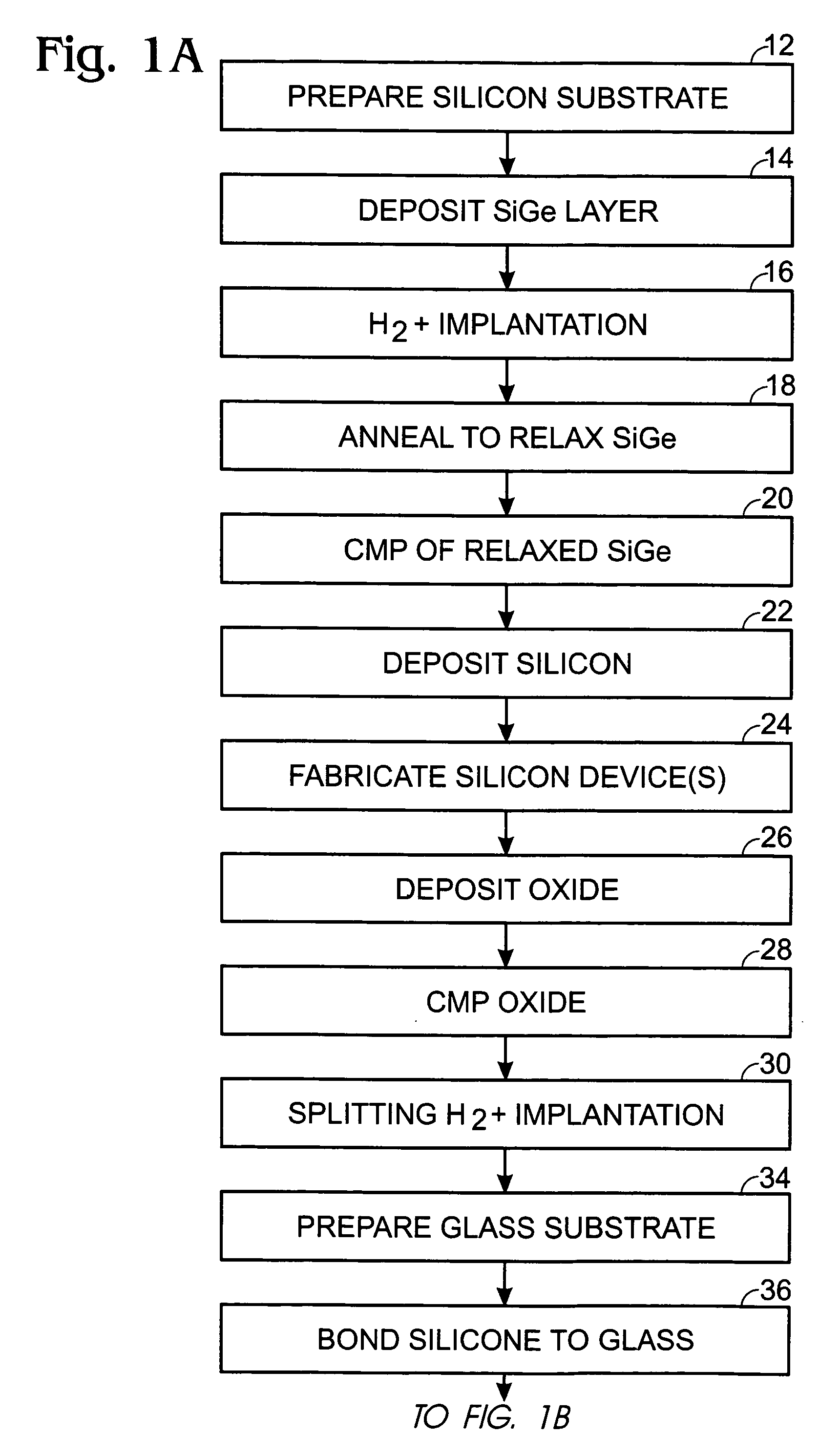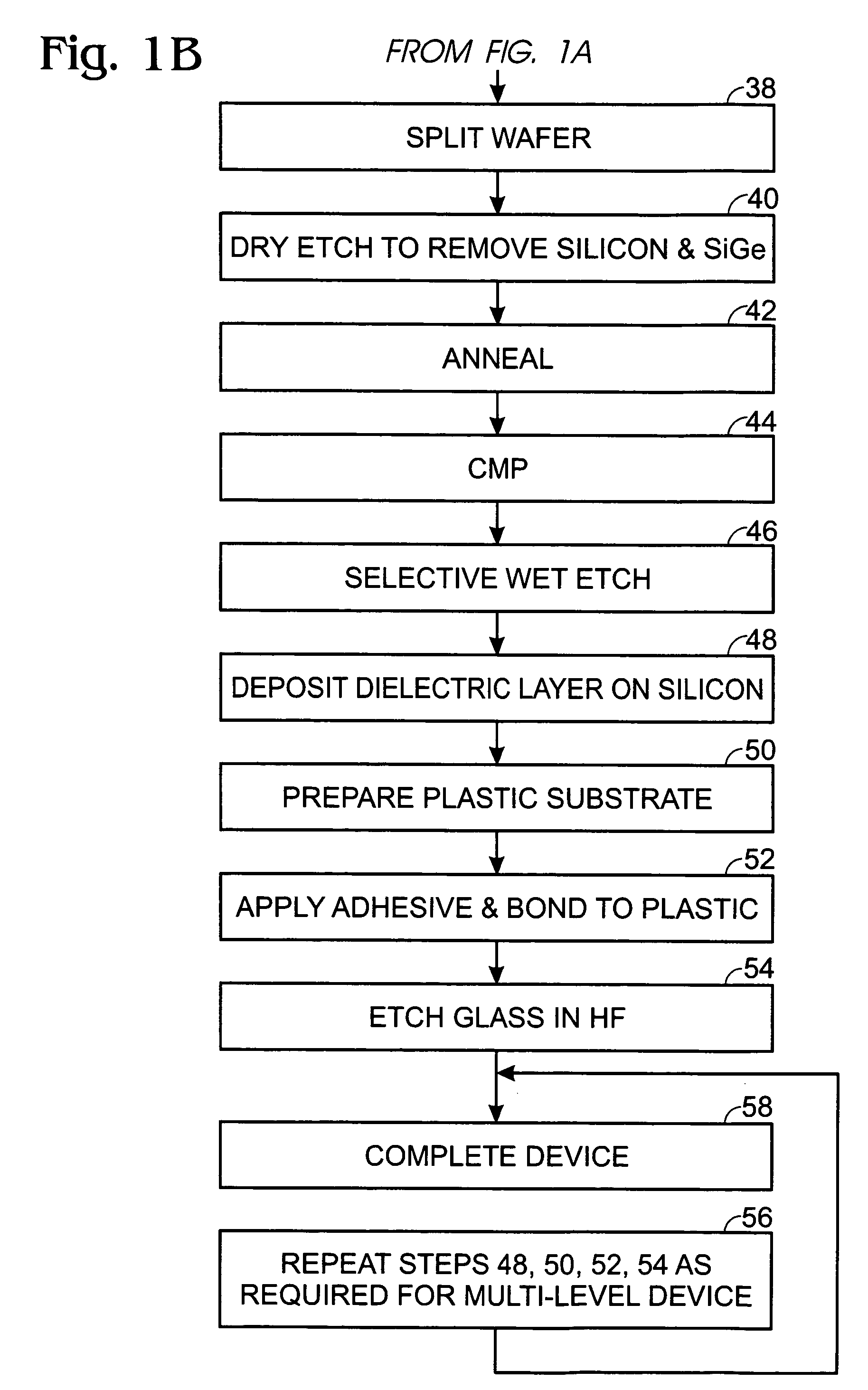Method of fabricating single-layer and multi-layer single crystalline silicon and silicon devices on plastic using sacrificial glass
- Summary
- Abstract
- Description
- Claims
- Application Information
AI Technical Summary
Benefits of technology
Problems solved by technology
Method used
Image
Examples
Embodiment Construction
[0018] Unlike the above-identified prior art methods, a process is described herein to fabricate a high quality thin single crystalline silicon and silicon-based devices, and to then transfer the silicon, or silicon-based, device onto a plastic substrate.
[0019] The method of the invention includes fabrication of a single crystalline silicon layer and silicon-based devices on plastic substrate. The silicon may be either strained or unstrained. A strained silicon layer is first formed on a relaxed SiGe layer by hydrogen-implantation-induced relaxation. The strained silicon film is transferred to a sacrificial glass substrate by direct wafer bonding and hydrogen induced exfoliation. The method of the invention is similar to that described in Ser. No. ______, filed ______ for Method of Fabricating Silicon-on-glass via Layer Transfer, which disclosure is incorporated herein by reference, however, the additional steps described herein result in a single, or multi, level silicon layer, or...
PUM
 Login to View More
Login to View More Abstract
Description
Claims
Application Information
 Login to View More
Login to View More - R&D
- Intellectual Property
- Life Sciences
- Materials
- Tech Scout
- Unparalleled Data Quality
- Higher Quality Content
- 60% Fewer Hallucinations
Browse by: Latest US Patents, China's latest patents, Technical Efficacy Thesaurus, Application Domain, Technology Topic, Popular Technical Reports.
© 2025 PatSnap. All rights reserved.Legal|Privacy policy|Modern Slavery Act Transparency Statement|Sitemap|About US| Contact US: help@patsnap.com



